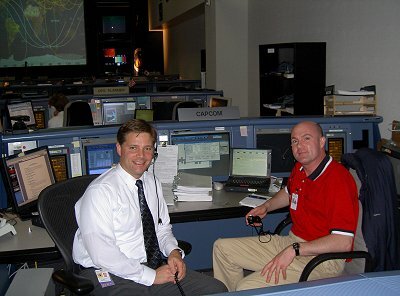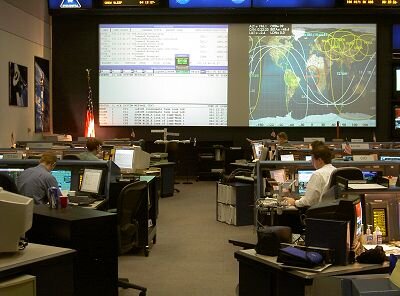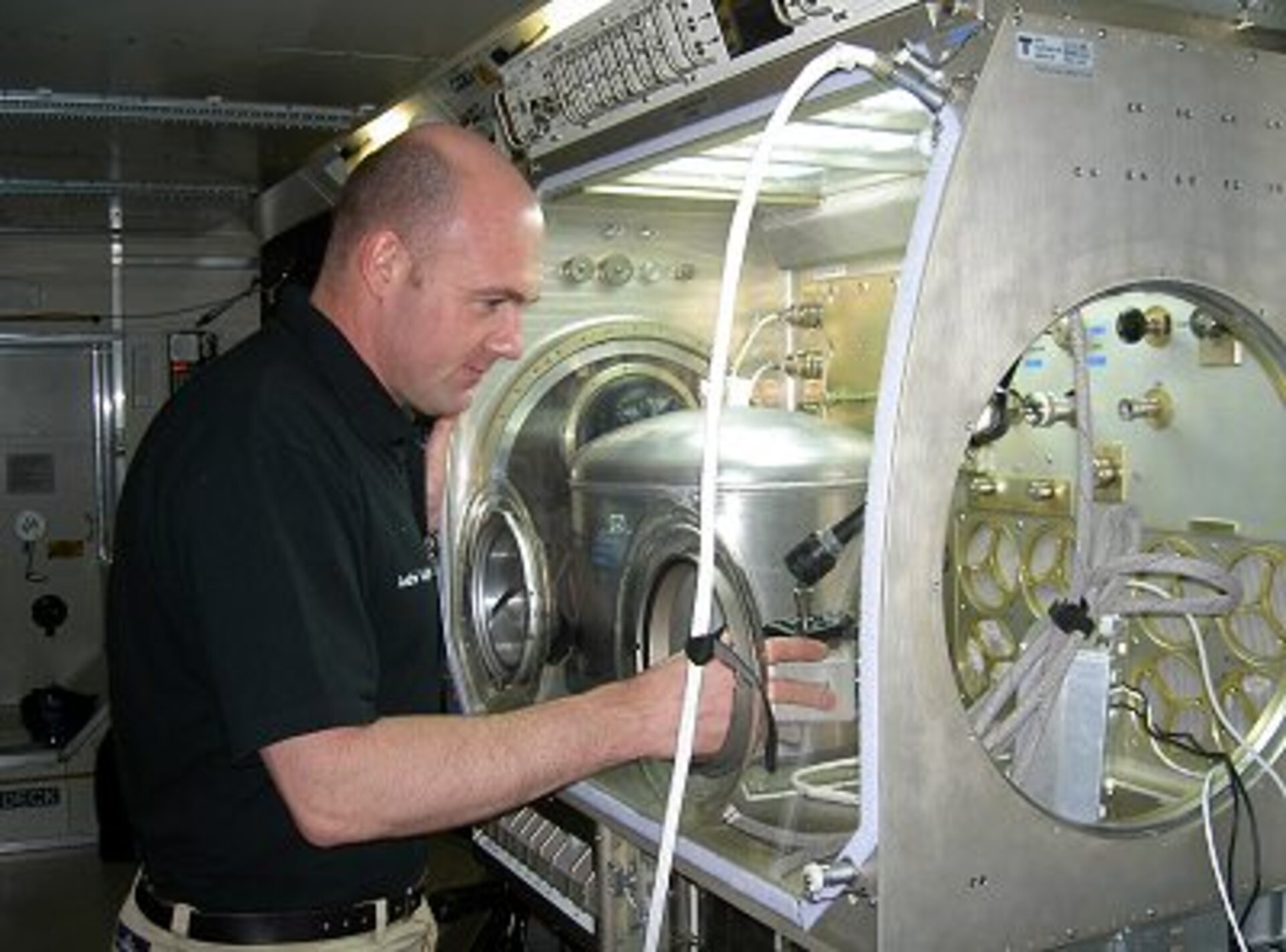André Kuipers' diary - Part 10: Training in Houston II
12 - 18 February My second week here at the Johnson Space Center was mainly devoted to the Microgravity Science Glovebox (MSG) and the two experiments that I am going to carry out inside it.
MSG belongs to ESA; it was built under Dutch supervision and now sits in the American section of the Station. You insert your hands into rubber gloves to work in a sort of miniature laboratory. It is an enclosed box from which hazardous gases cannot escape.
Because the experiments require a lot of preparation and numerous procedures, we have trained for every aspect, from getting the timeline and procedures from the computer in the morning, to performing the experiments and then putting them back into storage. There was also a simulation involving the various ground stations. A camera allowed ESA in the Netherlands to watch ‘over my shoulder’, as it were. This kind of training is very useful. A lot of the jigsaw pieces are falling into place, and it really gives me confidence that the mission will be successful.

Earlier this week, I trained with all the communication equipment and the computer systems that I must be able to operate. From the Space Station you can talk to the ground bases at Houston and Huntsville and with the operations centre in Moscow, where some of my ESA colleagues are based. While off duty, you can call home by telephone or log into the computer to send e-mail. Receiving e-mail is a bit more complicated. Before I go up, I have to give NASA a list of e-mail addresses, and I can only receive e-mail from the people on the list. Otherwise, of course, everyone in the world would be able to send me a message.
The computer can also display a map of the world, showing the exact location that the Space Station is currently flying over, and where its flight path will take it. This will be very handy later when I am establishing radio contact with schools in the Netherlands for one of the experiments. An extension cable has been connected to the radio equipment, and now I can look out of the window at the Netherlands as I speak to them... as long as it is not covered by clouds...

Filming
There is a lot of photographic and video equipment on board the Space Station. I learned how to use the American cameras this week. We record the experiments and the flight itself, both for the public and for scientists. I film quite often for myself, so I am already familiar with much of the technology. I use my video camera in the Space Station training modules. I call it my ‘external memory’. When training has ended, I run through everything again making a recording with my video camera. Then I watch it later; sometimes before doing the same training exercise again, sometimes just for an hour in bed. It keeps everything fresh in my memory.
I have also had meetings with my managers and colleagues this week. First there was a meeting with NASA, about the future and whether everything is going OK. We talked about all sorts of things, such as what happens after the landing. I already knew many of the people through my work. One of them was the chief of the NASA office at Star City. I met another during the landing of my European colleague, Pedro Duque, and a third had been the Shuttle pilot on the first mission that I was involved in as a project scientist.

'Inside stories'
Afterwards, I had all kinds of informal meetings with my fellow astronauts. Léopold Eyharts, for example, who flew to the Mir space station in 1998, and Roberto Vittori, who made a similar flight to mine in 2002. I was keen to hear their ‘inside stories’ – stories from people who have been in the same boat as I will soon be in. We talked about practical matters, such as privacy, the toilet and what happens if you are ill. And those wet towels that you wash with in the Zarya module: what do you do with them when you have finished? These were matters that had only been touched on during training. I found out that the towels, for example, have to be hung out to dry first because water is very precious and you want to recycle it via the closed system on board.
One presentation that went into great detail was about the medical equipment. There is an awful lot of it, from a defibrillator to injections and from dental equipment to stitches. A complete hospital in space, you might say. If necessary, we have to be able to pull a tooth, deal with an asthma attack or carry out resuscitation. The equipment will probably never be used (and we certainly hope so), but it is excellent nevertheless.

Mission Control
The last activity on Friday was a visit to Mission Control. There I was told about how all activities on the Station are controlled from the ground here in Houston. Its good to have an idea of what it looks like here and meet some of the people I will speak to from space.
Party
On Friday evening last week there was a party to celebrate the fact that the present crew has been in the Station for 100 days. As ‘prime crew’, we were naturally invited.
I spent the weekend with my two daughters. They thought it was wonderful to see way of life here in Texas - cowboy hats, pickup trucks and neon advertisements. They also accompanied me for two dinner appointments. One was with my old crewmates, Leroy Chiao, Bill McArthur en Valeri Tokarev. That was really enjoyable.
Later we dined with my present crewmates, Fincke and Padalka, and the reserve crew consisting of Sharipov, Chiao and Thiele, together with all their families. Looking around, we counted eight different nationalities in all – American, Russian, Dutch, German, Chinese, Swedish and even Indian and Uzbek. Fantastic! And very typical of the international cooperation that we see in the International Space Station.




